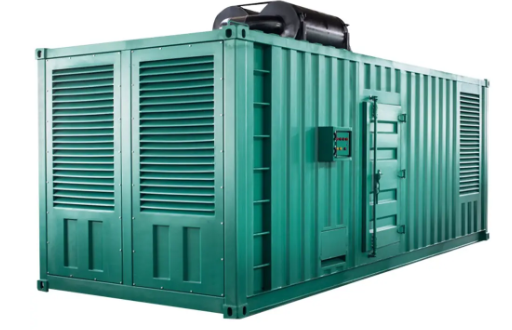Assessing Power Requirements for 30kVA Generators
Creating a Comprehensive Equipment List
To accurately assess power requirements for a 30kVA generator, begin by developing a comprehensive equipment inventory. This involves listing all the equipment needing power to ensure clear energy needs are established. Each piece of equipment should be categorized by type, such as lighting, HVAC systems, and machinery, to facilitate a streamlined assessment. To facilitate accurate calculations, you should include the wattage ratings and estimated operational hours for each item. An organized approach to listing equipment and understanding their energy consumption will ensure you select the right generator.
Calculating Starting Current Demands
Determining the starting current demands is critical to identifying the right generator for your needs as this current, also known as inrush current, can be significantly higher than the running current for motors. The starting current is typically calculated using the formula Starting Current = Running Current x Start-Up Multiplier. To assist with these calculations, consider the specifications of commonly used equipment such as air conditioners and industrial machines, which often have higher starting current requirements. Understanding these demands ensures that your generator can handle equipment start-up without tripping.
Implementing a Safety Margin (10-20%)
Including a safety margin when sizing a generator is a prudent practice to prevent unexpected power surges from overloading the generator. It is recommended to calculate an additional 10-20% capacity beyond the total load requirements to ensure the generator operates efficiently and its lifespan is extended. This extra capacity acts as a buffer, reducing strain during peak power demands and providing room for potential additional loads in the future. Including a safety margin in your calculations can significantly contribute to the generator's reliability and operational longevity.
Understanding kW vs kVA in Generator Selection
The Critical Role of Power Factor (0.8 Standard)
The power factor is a crucial component in selecting a generator as it helps convert kVA to kW, ensuring that you choose an appropriate generator for your needs. It represents the efficiency with which electrical power is converted into useful work output. In most commercial applications, a standard power factor of 0.8 is applied. To determine the real power usage, you multiply the apparent power (kVA) by this power factor. For example, a generator rated at 30 kVA will provide 24 kW (30 kVA x 0.8 power factor). Understanding how power factors adjust load calculations can optimize generator use, ensuring excess power is neither wasted nor insufficient.
Converting Your Load to Generator kVA Requirements
To accurately determine the generator capacity needed, convert your load requirements from kW to kVA using the formula: kVA = kW / Power Factor. Here's a step-by-step example: if your equipment's load sums up to 20 kW, divide this by a power factor of 0.8, resulting in a requirement of 25 kVA. Recognizing this conversion is vital for selecting the correct generator capacity that will not only meet your power needs but also operate efficiently. Understanding this conversion process is key to selecting the right 30kVA generator, catering specifically to your operational requirements.
Managing Electrical Load Types Effectively
Resistive vs Inductive Load Characteristics
Understanding the differences between resistive and inductive loads is crucial for effective generator management. Resistive loads, like heating elements, consume power consistently, whereas inductive loads, such as motors, require additional start-up power. These inductive loads are characterized by their initial surge of power demand, often necessitating generators with higher capacity or surge ratings to accommodate the start. For instance, while a heater might operate continuously using a predictable power level, a motor may briefly demand much more power at start-up. These characteristics significantly impact generator selection and efficiency, underscoring the importance of accounting for the surge demands of inductive loads when sizing a generator.
Optimizing for Mixed Load Scenarios
Optimizing mixed load scenarios demands strategic planning, especially for businesses where various load types coexist. Here are some strategies to ensure generator efficiency:
- Load Allocation: Allocate a percentage of total kVA to each load type according to operating needs. Typically, a larger portion is allocated for inductive loads due to their start-up power requirements.
- Efficiency Process: Implementing load shedding processes to prioritize essential systems during peak demand times can enhance efficiency.
- Understanding Implications: Not considering mixed load scenarios can lead to inadequate generator capacity, potentially compromising operations. Failure to account for these can result in inefficiencies or operational failures if the generator cannot match the diverse demand patterns.
By carefully calculating and planning for mixed loads, businesses can maintain efficient operation, ensuring all power demands are sufficiently met, and reducing potential downtime or operational hiccups.
Verifying Optimal 30kVA Generator Performance
Maintaining 40-80% Load Capacity
An optimal load capacity of 40-80% is crucial for generators to function efficiently and ensure longevity. Operating within this range allows the generator to maintain an adequate balance between energy output and mechanical stress, preventing undue wear or potential breakdowns. Consistently running a generator below 40% load can lead to what's known as "wet stacking," where unburned fuel accumulates, causing damage over time. Conversely, exceeding 80% puts additional strain on the generator, increasing the risk of overheating and shortening its lifespan. Research suggests maintaining this efficient range enhances operational practices and supports generator efficiency in the long term, ensuring your investment delivers reliable performance.
Avoiding Operational Risks Through Proper Sizing
Proper generator sizing is pivotal to mitigate operational risks, ensuring your unit is apt for the load demands of your business. When a generator is undersized, it struggles to meet power requirements, leading to overheating and frequent failures. Over-sizing can incur unnecessary operational costs and inefficient power production. The key is engaging in precise calculations to ascertain your power needs, which involve considering starting and running wattage and examining load performance charts. Continuous monitoring and re-evaluation of load demands are recommended strategies to ensure alignment with operational needs, thus preventing risks associated with improper sizing and optimizing generator functionality.
Frequently Asked Questions
What is the significance of a power factor in generator selection?
The power factor is significant in generator selection because it provides insight into the efficiency of converting electrical power into useful work. It helps in calculating the real power usage and ensuring that the selected generator matches the actual power needs of the equipment.
Why include a safety margin when sizing a generator?
Including a safety margin (10-20% extra capacity) helps accommodate unexpected power surges and future load increments without overloading the generator, thus extending its operational lifespan and ensuring reliable performance.
How do resistive and inductive loads differ?
Resistive loads consume power at a consistent rate, while inductive loads require additional power during startup. This difference necessitates a selection of generators that can accommodate both steady and surge demands.

